Measuring Psychological Constructs over a Developmental Span: Methodological Approaches
Brandon LeBeau
University of Iowa
Background
- Petersen, I. T., Lindhiem, O., LeBeau, B., Bates, J. E., Pettit, G. S., Lansford, J. E., & Dodge, K. A. (2018). Development of internalizing problems from adolescence to emerging adulthood: Accounting for heterotypic continuity with vertical scaling. Developmental psychology, 54(3), 586.
- Peterson, I.T. & LeBeau, B. (In Press). Language Ability in the Development of Externalizing Behavior Problems in Childhood. Journal of Educational Psychology.
- Peterson, I.T. & LeBeau, B. (Under Review). Creating a Developmental Scale to Chart the Development of Psychopathology with Different Informants and Measures across Time. Journal of Abnormal Psychology.
- Peterson, I.T., LeBeau, B., Choe, D.E. (Under Review). Creating a Developmental Scale to Account for Heterotypic Continuity in Development: A Simulation Study. Child Development.
- NIH Grant Application
Methodological Problem
Heterotypic Continuity
- Behavioral manifestations change with development.
The following aspects across time change:
- Rank order across people
- Level on the construct
- Strength of construct.
Common Approaches in Psychology
- Using only common items across time
- Use all item over time
- Factor Analytic/IRT approaches with linking
- SEM
Internalizing Problems
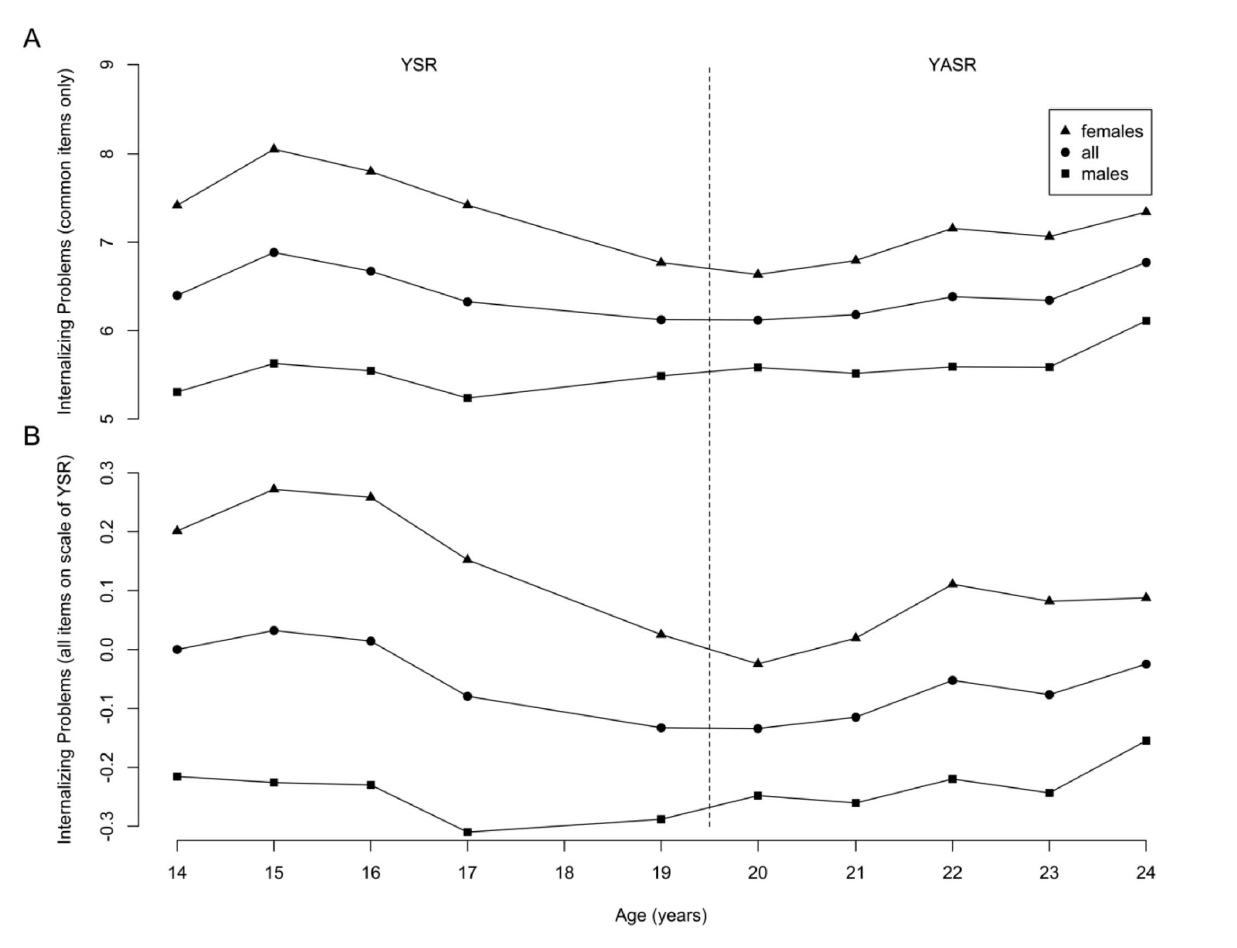
Growth Internalizing Problems
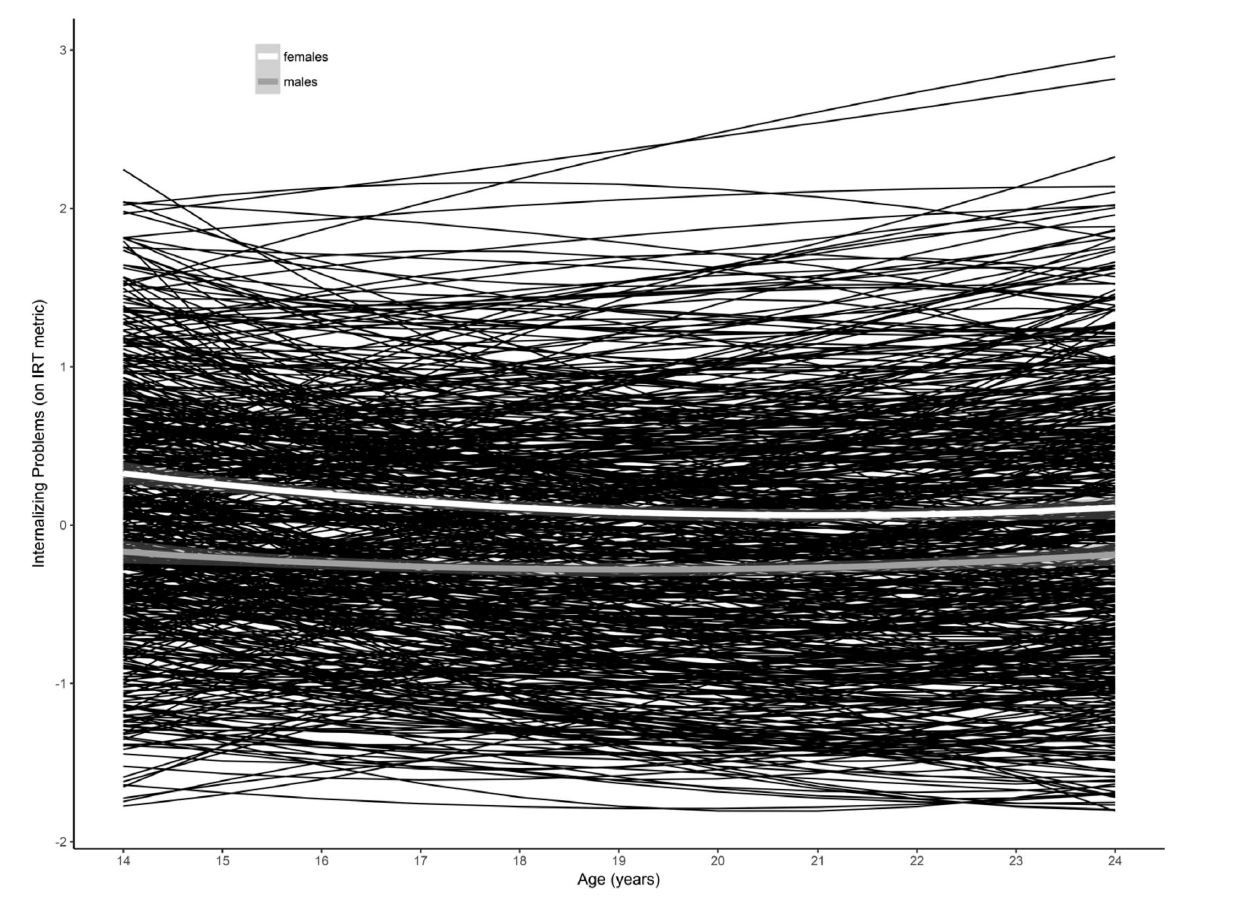
Externalizing Problems
- We examined whether within-child changes in language ability predict concomitant within-child changes in externalizing problems
- We examined whether social skills are a potential mechanism that explains the association between language ability and externalizing problems
Externalizing Measures
- CBCL 4 - 18: Mothers from 4 to 10 years of age.
- TRF: Teachers from age 4 to 10, age 4 was a preschool or other caregiver.
- We created developmental scales using IRT and linking for each rater independently.
- Separate mixed models fitted for each rater.
- Explored cross-lagged panel models as well.
Linking example
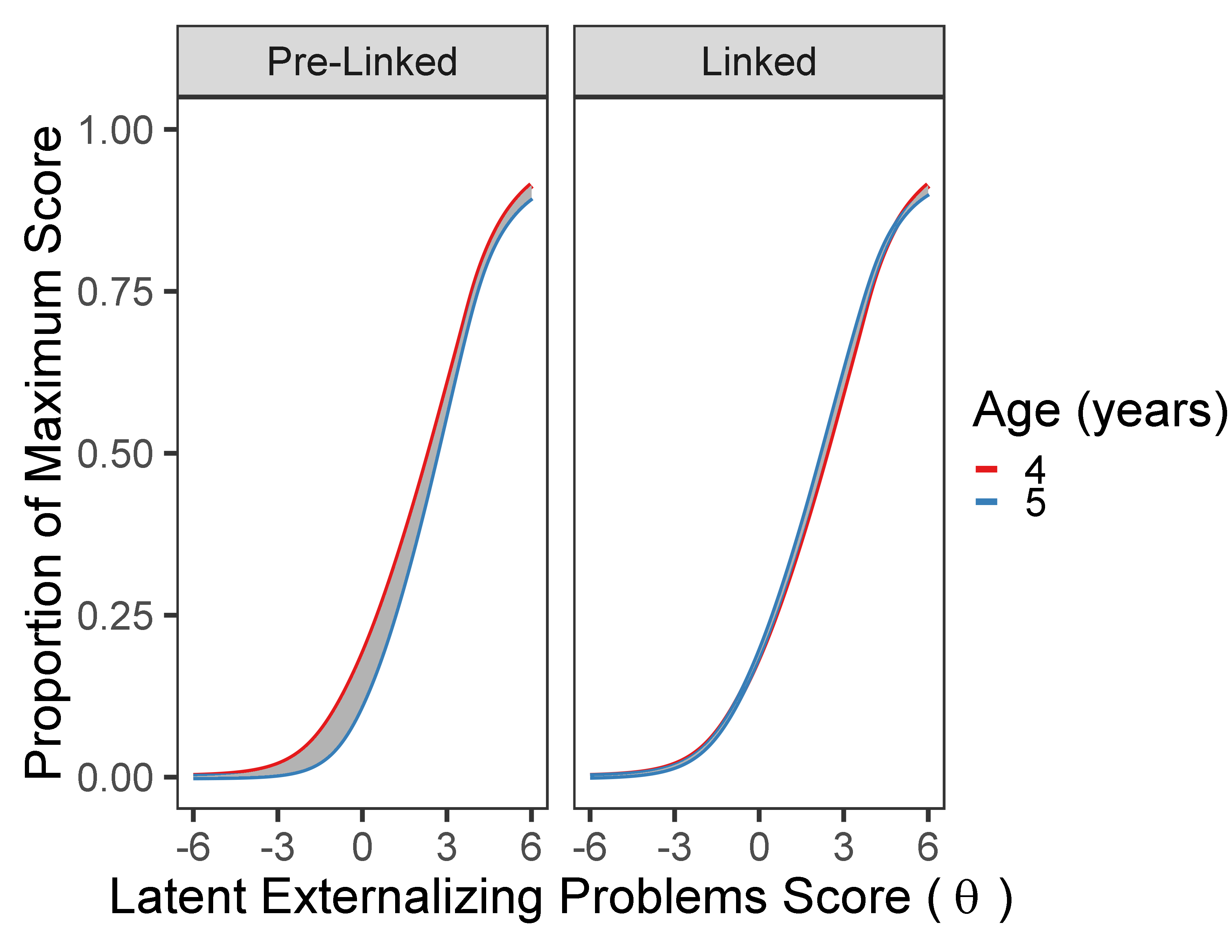
Growth Trajectories
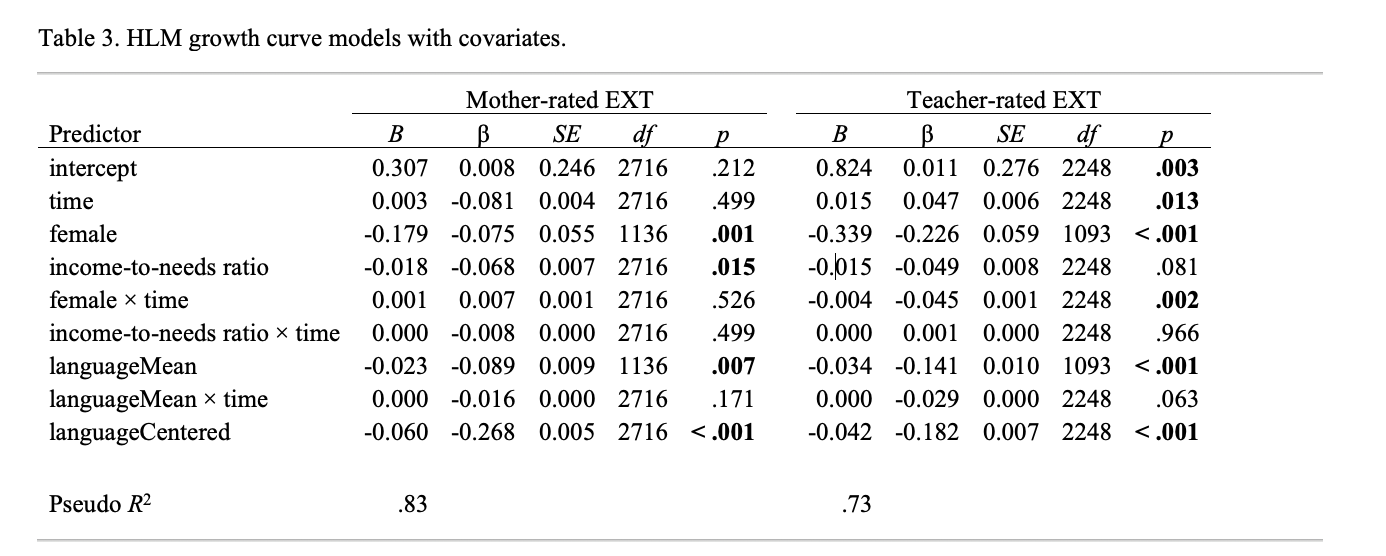
Externalizing Problems - Changing Measures
Linking Design
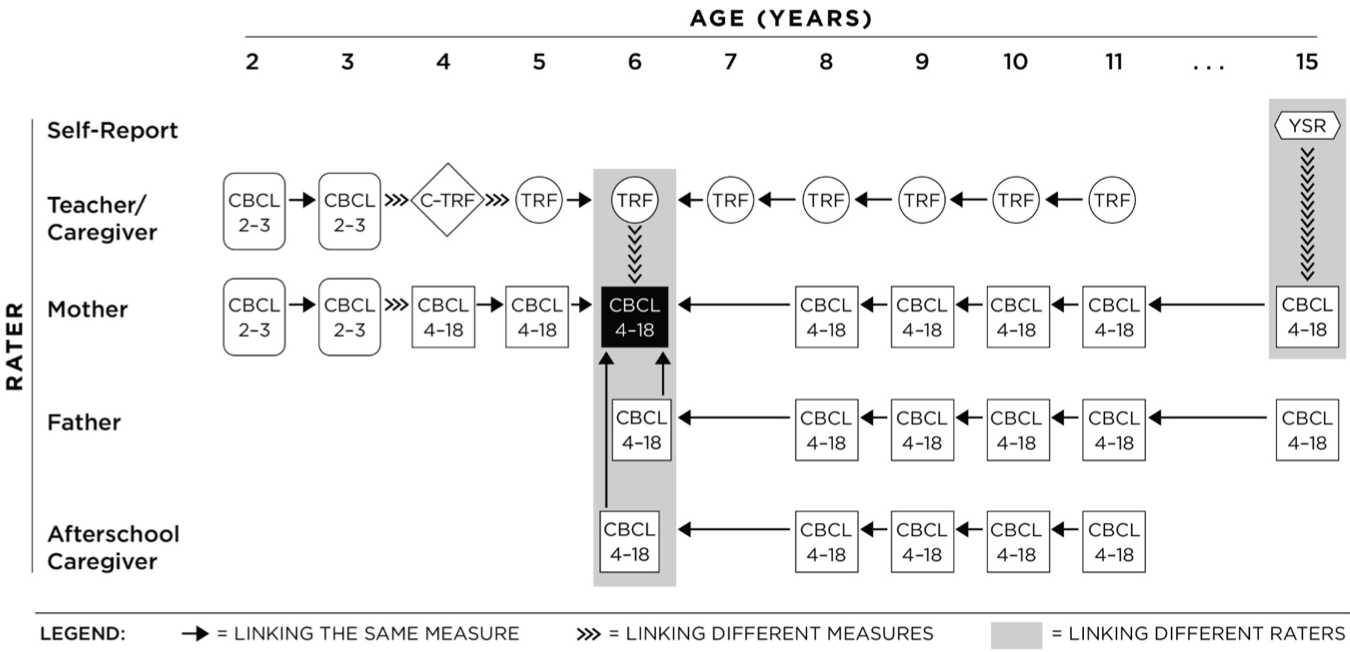
Model Implied Trajectories

Language Effect
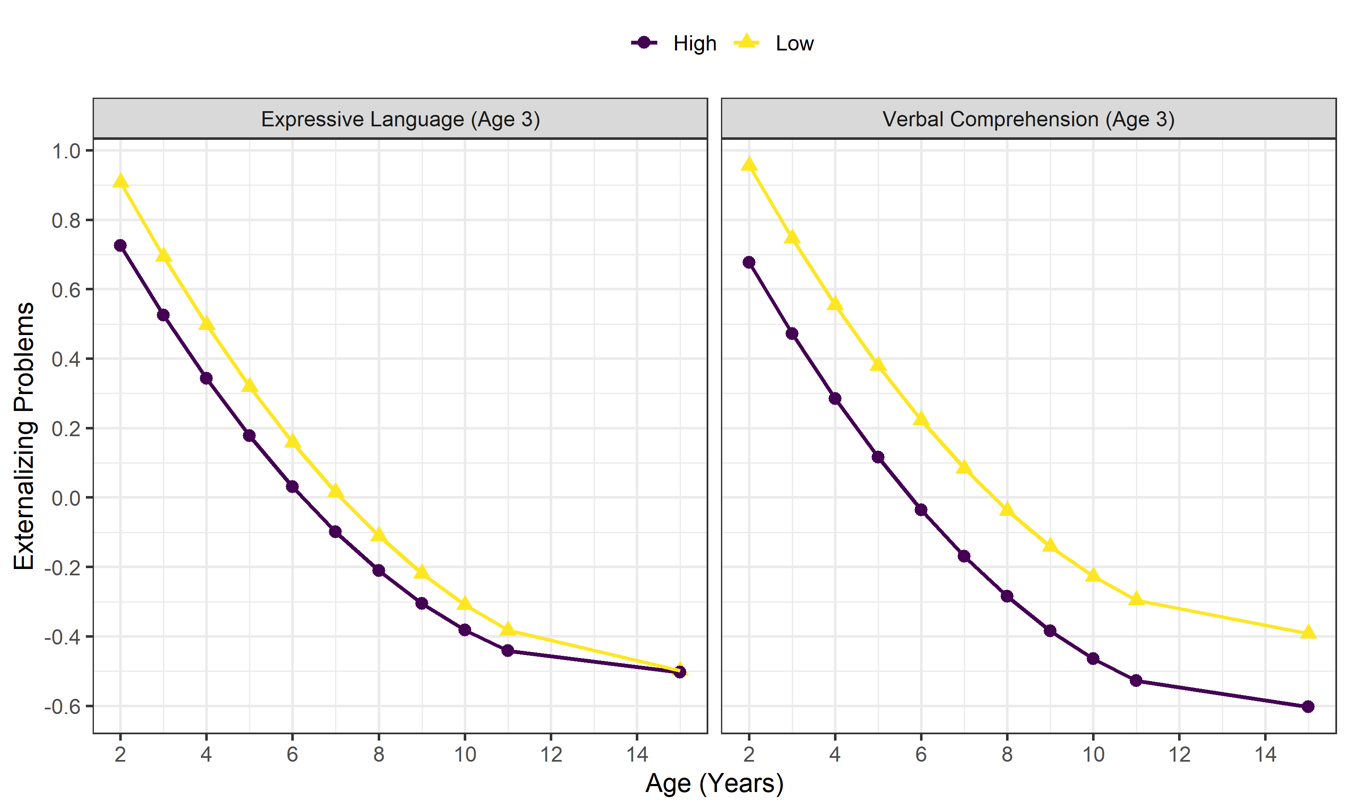
A Simulation
Approaches
- All possible content: Summed scores
- Only common content: Summed scores
- Construct valid content: IRT developmentally scaled factor scores
- Construct valid contnet: IRT factor scores (not developmentally scaled)
- All possible content: IRT developmentally scaled factor scores
- All possible content: IRT factor scores (not developmentally scaled)
Balanced Design
- Number of Items: 20 or 40 items
- Proportion of common content: .2, .5, .8
- Change in severity (difficulty) common content: -0.5, -0.25, -0.1, 0, 0.1, 0.25, 0.5
- Average severity (difficulty) unique content: -2, -1, 0, 1, 2
Unbalanced Design
- Varied:
- Change in severity (difficulty) common content: -0.5, 0.5
- Average severity (difficulty) unique content: -2, 0, 2
- Fixed:
- Number of Items: 15 time 1; 25 time 2; 40 time 3
- Common items fixed at 10
Simulation process
- Randomly generate item parameters for common items
- Discrim: log normal, mean 0, sd 0.25
- Severity: Normal, mean 0, sd 1
- Linked item parameters across time based on change in severity of common content.
- Randomly generate item parameters for unique items
- Randomly generate latent externalizing problems scores (i.e. factor scores), normal: mean 0, sd 1
- Simulate item responses using item parameters and factor scores.
Simulation Process 2
- For all item content:
- Transformed unique non-construct valid content, add 5 SD to severity, cut discrimination in half.
Outcomes
- Standardized slope estimates
- Bias in factor scores at time 1
- Mean absolute error of factor scores at time 1
Standardized Slope
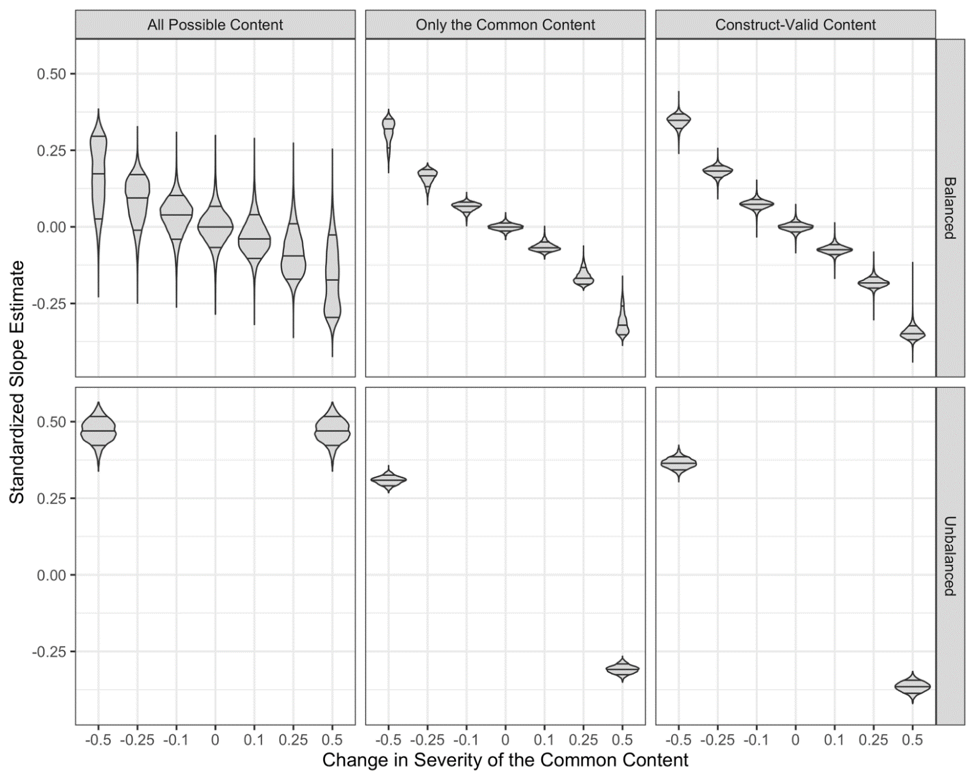
o
Correlations
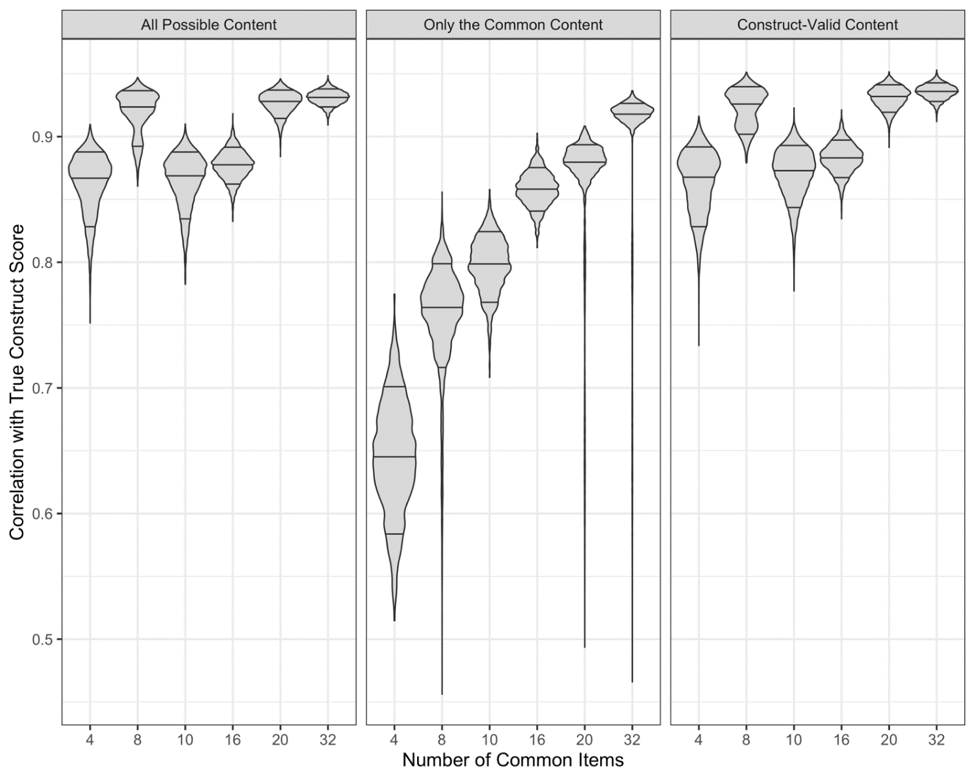
Thank You
- Questions?
- https://brandonlebeau.org/slides/casma2020/
Measuring Psychological Constructs over a Developmental Span: Methodological Approaches
Brandon LeBeau
University of Iowa